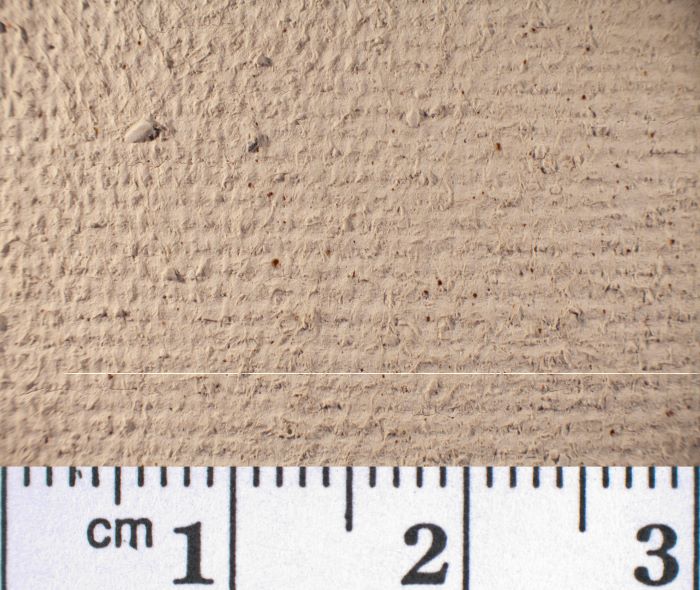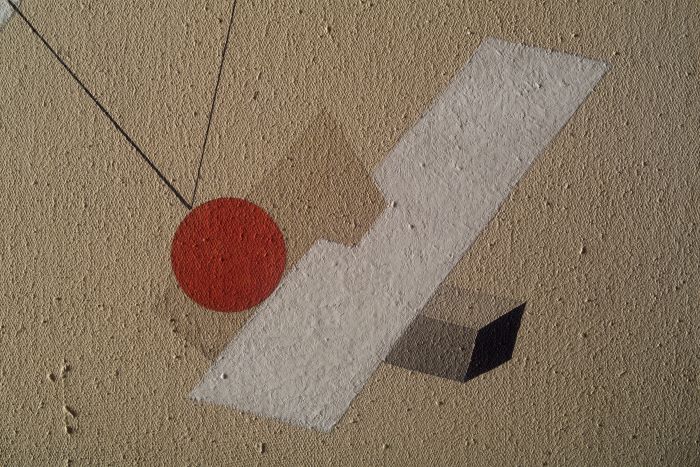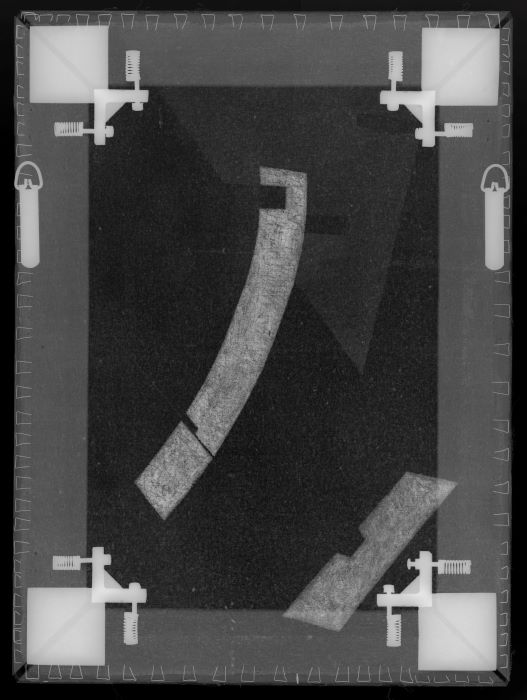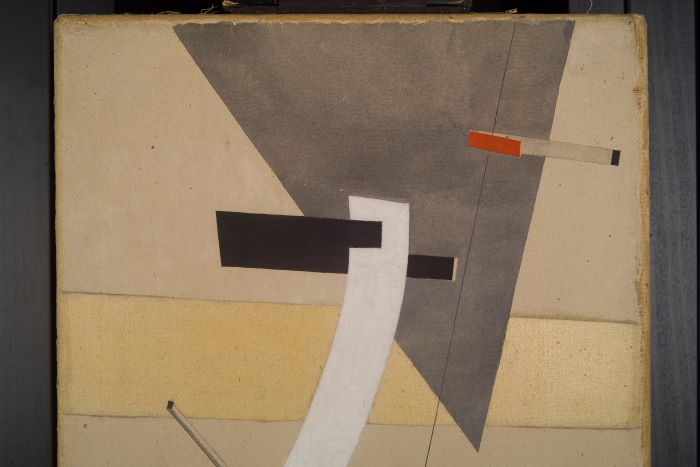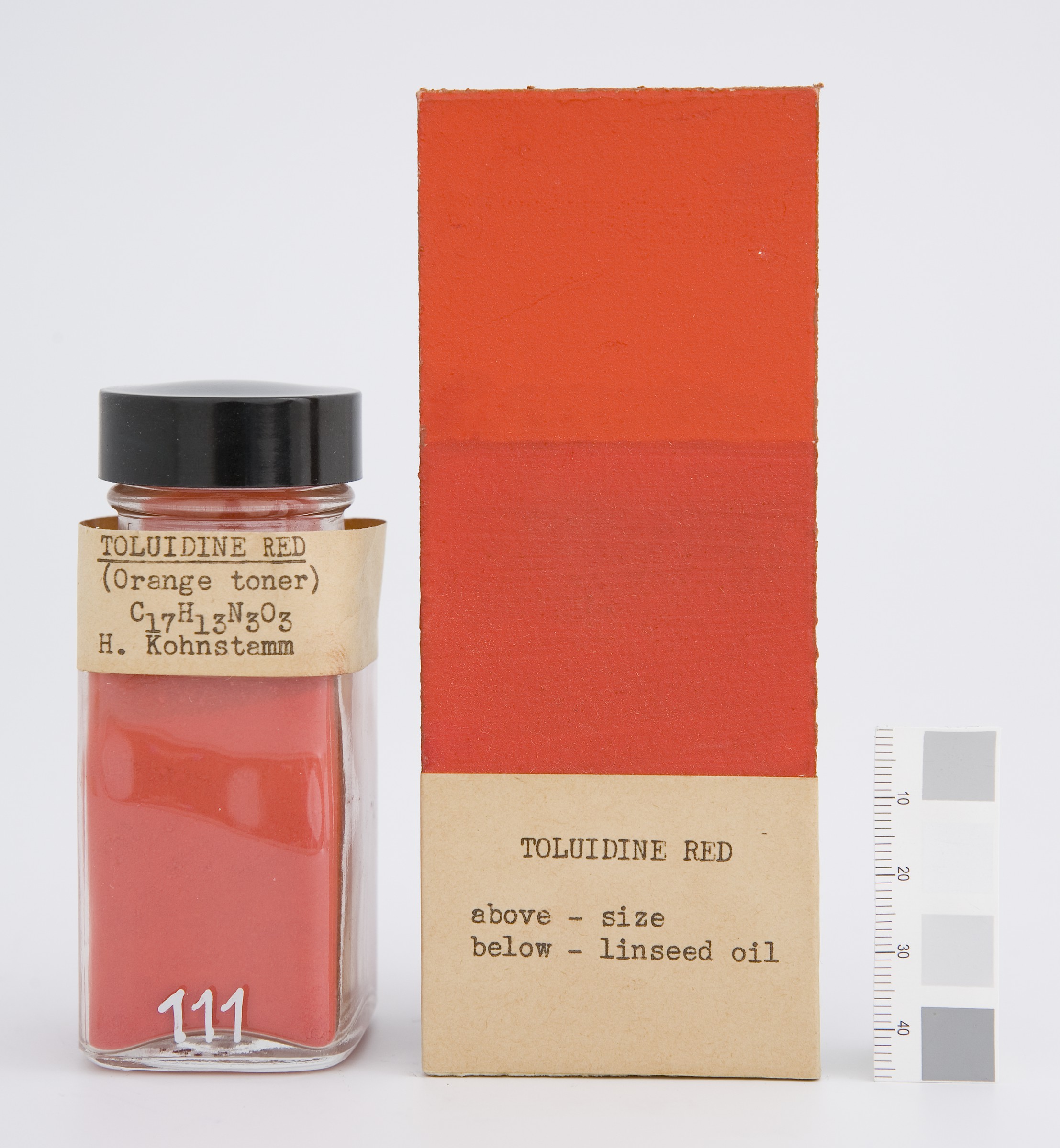An upcoming exhibition at the Museum Ludwig in Cologne, Germany, will highlight the troubling history of forgery within the field of Russian avant-garde painting. The Busch-Reisinger Museum’s Proun 12E will be displayed there as a genuine example of El Lissitzky’s artistic output as compared to counterfeit works.
We recently carried out a technical study in the Straus Center for Conservation and Technical Studies of the painting’s material qualities, or faktura, as artists of the Russian avant-garde would have said. Our research revealed extensive traces of planning that enabled Lissitzky to achieve the desired material effects.
Proun 12E was acquired by the Busch-Reisinger Museum in 1949. The painting’s well-documented history leaves no room for any doubt of its authenticity. The painting ranks among the Harvard Art Museums’ most celebrated examples of Russian avant-garde art and anchored the ground-breaking 1987 exhibition El Lissitzky 1890–1941. As a trained architect, painter, graphic designer, and educator, Lissitzky was one of the 20th century’s most creative minds. A recent documentary film reminds viewers how unusual Lissitzky’s position was within the international avant-garde. While other artists in revolution-era Russia abandoned easel painting in favor of utilitarian art forms, Lissitzky remained committed to painting and its role in advancing creative and spiritual life. However, his compositions, often named Proun, broke with painterly conventions. Pronounced “pro-un,” Proun is an acronym for the phrase the artist coined, in Russian, to describe his “project for the affirmation of the new.”


